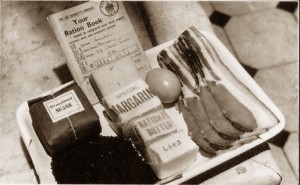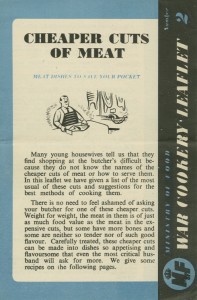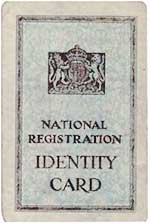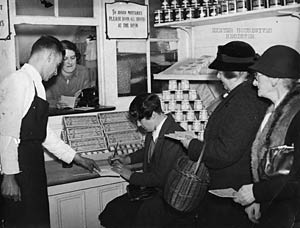Oatmeal became an important food in wartime. It was used as a thickener in soups, used to make mock meats (oatmeal “sausages”) and of course as a breakfast food. The Kitchen Front from the Ministry of Food said:
OATMEAL IN WARTIME
Most of us, because of rationing, are eating less butter, and consequently we should make the best use of foods rich in vitamins A and D and foods containing natural fats. Oatmeal, of all cereals, contains the most fat and is the best energising food. Here is an oatmeal recipe :
- 1 quart Water or Pot Liquor (liquid from boiled greens)
- 1 chopped Apple or 2 tablespoons Fruit Pulp if available
- 2 tablespoons oatmeal
- 1 large Potato, chopped
- 1 tsp Curry Powder
- 1 large Carrot, chopped
- ½ pint Milk
- ½ Swede (rutabaga) or 1 Turnip, chopped
- Salt & Pepper
- 2 tablespoons Parsley
Sprinkle the oatmeal into the boiling water or pot liquor and allow to boil for 5 minutes, stirring all the time. Add the salt, prepared fruit and vegetables (sliced or cut into small pieces) and the currypowder mixed with 2 tablespoons water. Allow to cook steadily for ¾ to 1 hour. When cooked, add the milk and pepper and reheat. Add the finely chopped parsley, stir well and serve very hot.
NOTE: — Add a bone or bacon rinds if available to improve flavour.
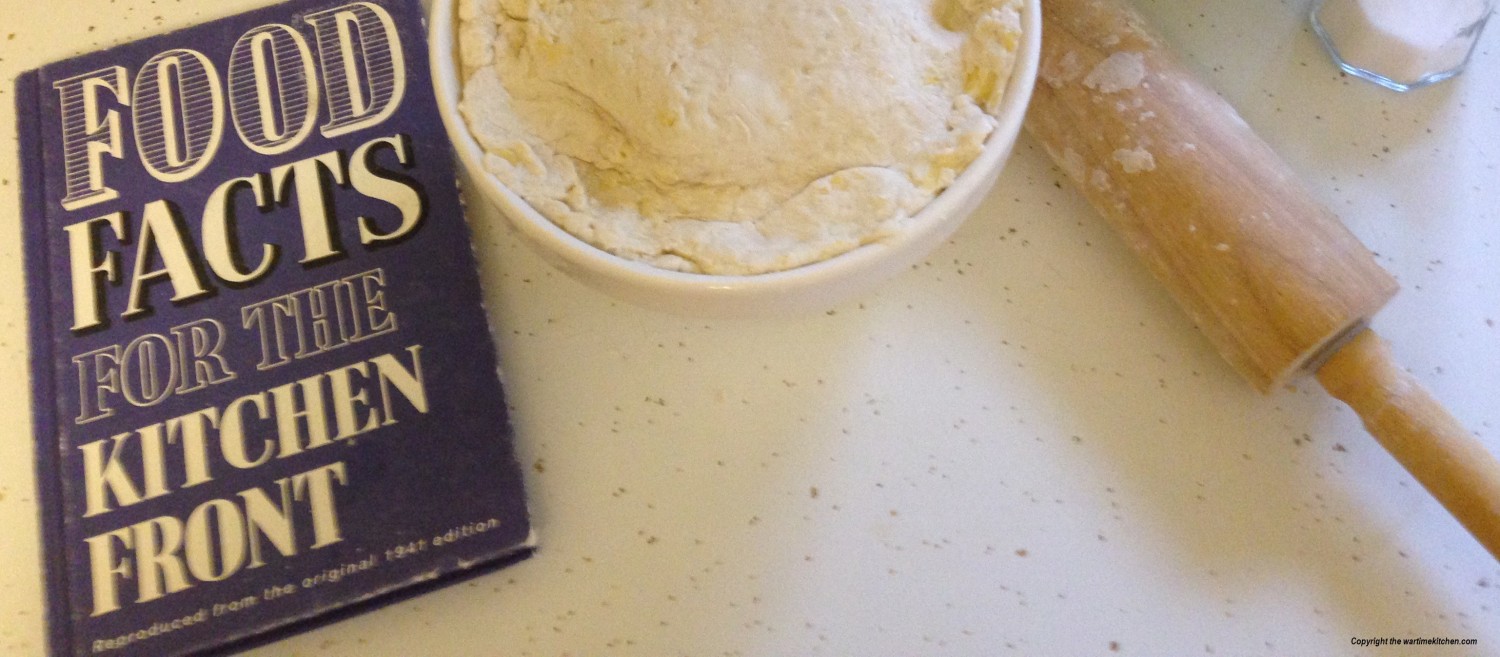



 Lord Woolton, Minister of Food
Lord Woolton, Minister of Food